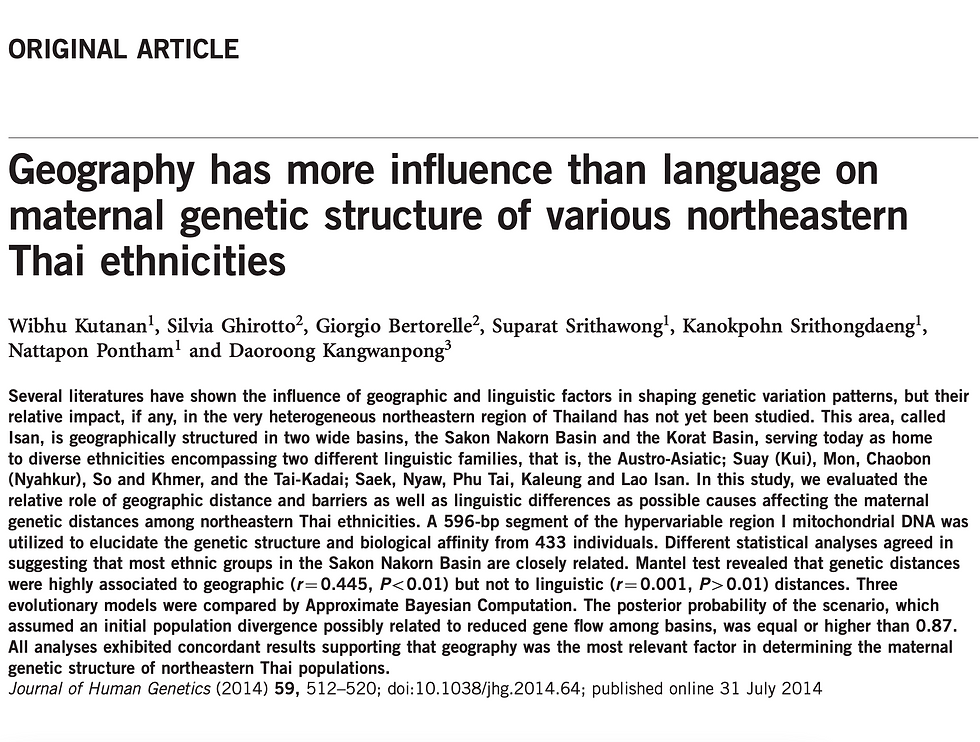Geography has more influence than language on maternal genetic structure of various Northeastern Thai ethnicities
- Nonglak Prakhun
- 23 ธ.ค. 2566
- ยาว 1 นาที
Wibhu Kutanan, Silvia Ghirotto, Giorgio Bertorelle,Suparat Srithawong, Kanokpohn Srithongdaeng, Nattapon Pontham
บทคัดย่อ
Several literatures have shown the influence of geographic and linguistic factors in shaping genetic variation patterns, but their relative impact, if any, in the very heterogeneous northeastern region of Thailand has not yet been studied. This area, called Isan, is geographically structured in two wide basins, the Sakon Nakorn Basin and the Korat Basin, serving today as home to diverse ethnicities encompassing two different linguistic families, that is, the Austro-Asiatic; Suay (Kui), Mon, Chaobon (Nyahkur), So and Khmer, and the Tai-Kadai; Saek, Nyaw, Phu Tai, Kaleung and Lao Isan. In this study, we evaluated the relative role of geographic distance and barriers as well as linguistic differences as possible causes affecting the maternal genetic distances among northeastern Thai ethnicities. A 596-bp segment of the hypervariable region I mitochondrial DNA was utilized to elucidate the genetic structure and biological affinity from 433 individuals. Different statistical analyses agreed in suggesting that most ethnic groups in the Sakon Nakorn Basin are closely related. Mantel test revealed that genetic distances were highly associated to geographic (r = 0.445, P<0.01) but not to linguistic (r = 0.001, P>0.01) distances. Three evolutionary models were compared by Approximate Bayesian Computation. The posterior probability of the scenario, which assumed an initial population divergence possibly related to reduced gene flow among basins, was equal or higher than 0.87. All analyses exhibited concordant results supporting that geography was the most relevant factor in determining the maternal genetic structure of northeastern Thai populations.

อ่านบทความฉบับเต็ม



Comments